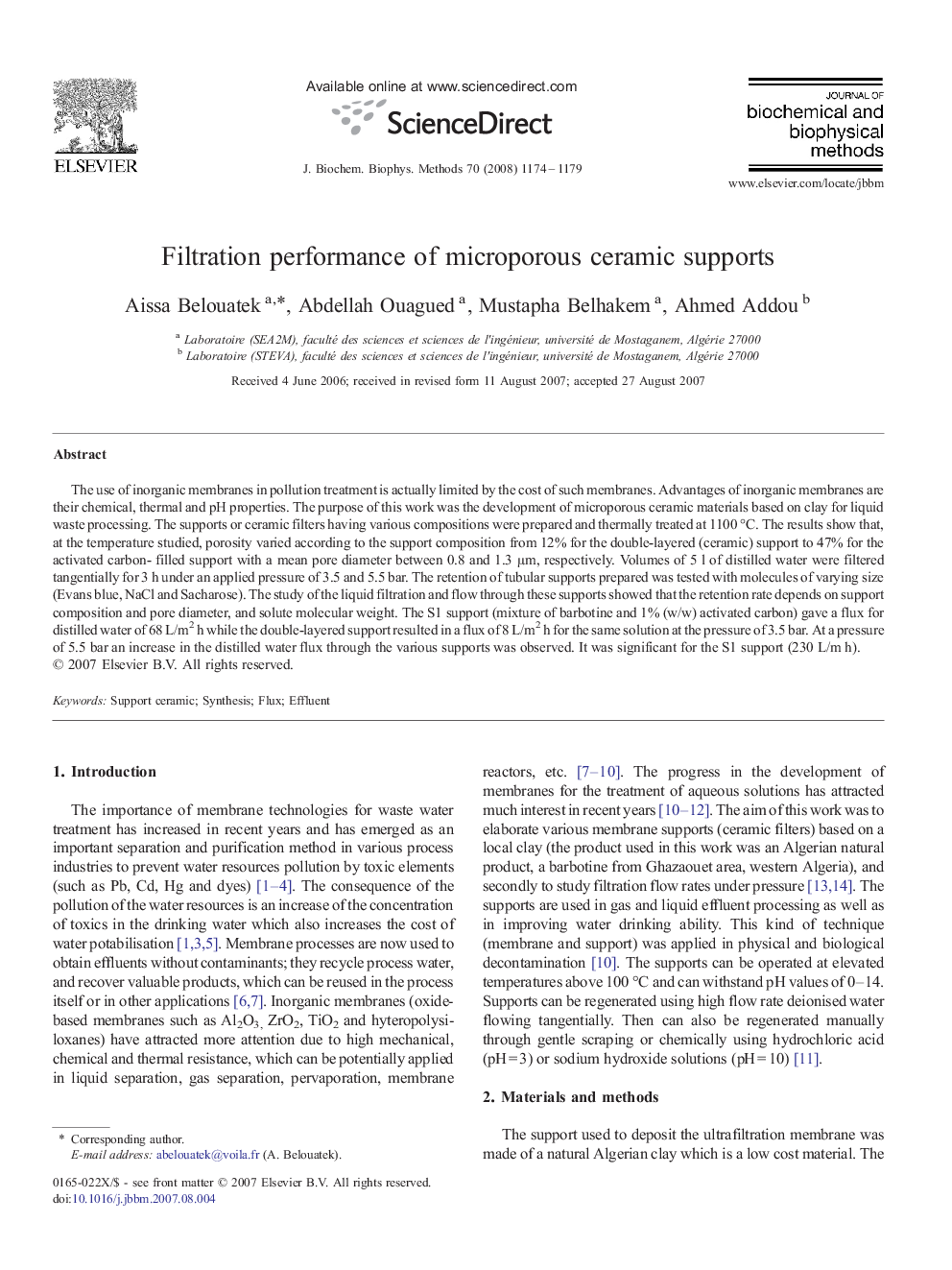| Article ID | Journal | Published Year | Pages | File Type |
|---|---|---|---|---|
| 1988405 | Journal of Biochemical and Biophysical Methods | 2008 | 6 Pages |
The use of inorganic membranes in pollution treatment is actually limited by the cost of such membranes. Advantages of inorganic membranes are their chemical, thermal and pH properties. The purpose of this work was the development of microporous ceramic materials based on clay for liquid waste processing. The supports or ceramic filters having various compositions were prepared and thermally treated at 1100 °C. The results show that, at the temperature studied, porosity varied according to the support composition from 12% for the double-layered (ceramic) support to 47% for the activated carbon- filled support with a mean pore diameter between 0.8 and 1.3 μm, respectively. Volumes of 5 l of distilled water were filtered tangentially for 3 h under an applied pressure of 3.5 and 5.5 bar. The retention of tubular supports prepared was tested with molecules of varying size (Evans blue, NaCl and Sacharose). The study of the liquid filtration and flow through these supports showed that the retention rate depends on support composition and pore diameter, and solute molecular weight. The S1 support (mixture of barbotine and 1% (w/w) activated carbon) gave a flux for distilled water of 68 L/m2 h while the double-layered support resulted in a flux of 8 L/m2 h for the same solution at the pressure of 3.5 bar. At a pressure of 5.5 bar an increase in the distilled water flux through the various supports was observed. It was significant for the S1 support (230 L/m h).
